Electromagnetism
1/11
There's no tags or description
Looks like no tags are added yet.
Name | Mastery | Learn | Test | Matching | Spaced |
|---|
No study sessions yet.
12 Terms
What happens when an electric current is in a conductor
An electric current in a conductor produces a magnetic field around it.
What is a solenoid?
It is a coil of wire with a strong uniform magnetic field inside it
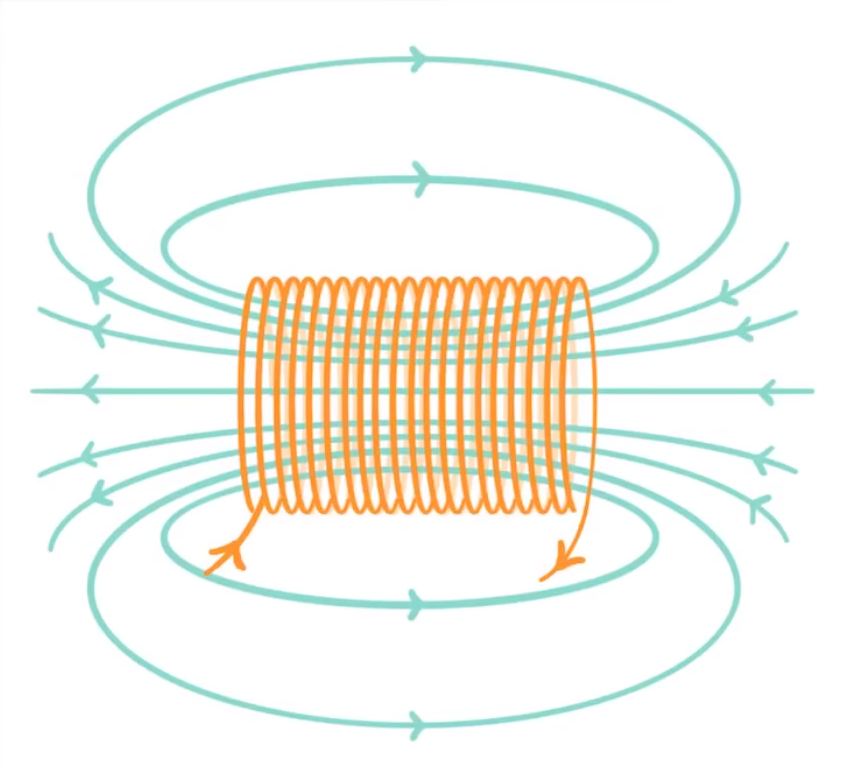
Describe the constructions of electromagnets
Electromagnets consist of a coil of wire (solenoid) wrapped around a magnetically soft core and can be turned on and off
How do you draw magnetic field patterns for a straight wire, a flat circular coil and a solenoid when each is carrying a current?
Include :
solenoid coil
both poles
magnetic field lines according to poles
current in and out
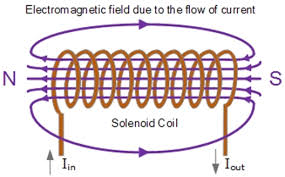
How does a simple d.c. electric motor show that a force is exerted on a current-carrying wire in a magnetic field?
It is when there is a conductor (coil of wire) carrying a current, which generates a magnetic field.
This wire is placed between 2 magnet with opposing poles that attract each other and therefore also produces a magnetic field.
The two magnetic fields exert a force on each other, one going up, one going down, causing the coil to rotate.
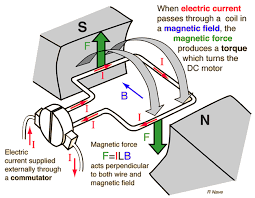
What are the 4 factors which could speed up the motor?
Increase the current
Wrap more turns on the coil
Increase the strength of the magnetic field
A soft iron core in the coil
How can you change the direction of the coil?
Swap polarity of the d.c. supply
Swap the magnetic poles
How does a loudspeaker show that a force exerted on a current-carrying wire in a magnetic field?
The loudspeaker consists of the cone with a base of a permanent magnet in the shape of a ‘E’, in the order of S,N,S or N,S,N poles, which create a magnetic field
The coil of wire is wrapped around the middle pole
There is an alternating current which passes through the coil, creating a magnetic field
The two magnetic fields interact and exert a force on each other, so when the current through the coil reverses, the force exerted also reverses
The a.c. signals make it move back and forth, in turn making the cone vibrate, creating sound
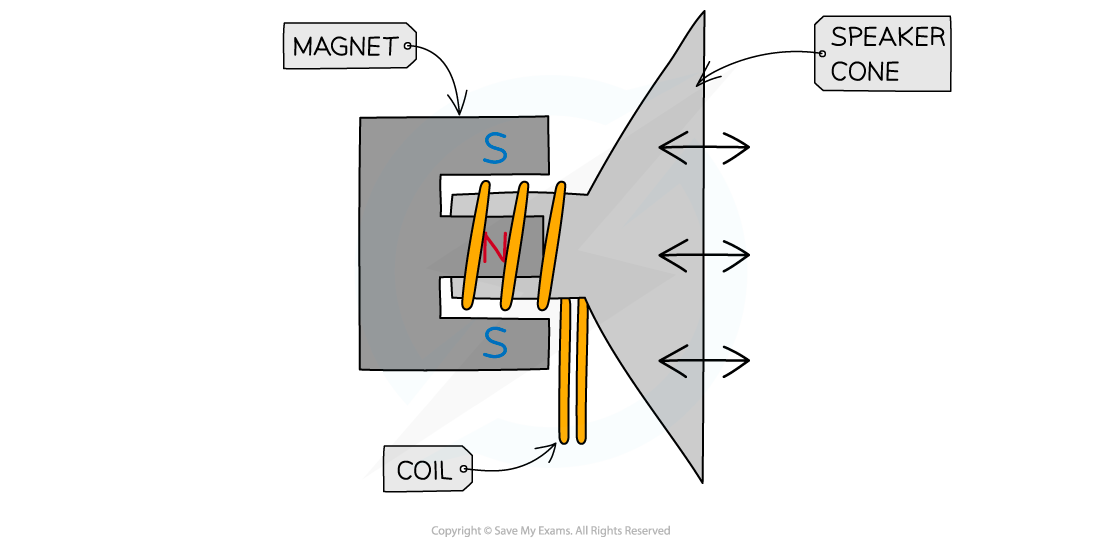
Explain Fleming’s left hand rule.
When the direction of the magnetic field (indicated by the first finger) is perpendicular to direction of the current (indicated by the second finger), the thumb automatically represents the direction of the resultant force.
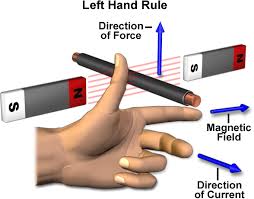
How to memorise Fleming’s left hand rule?
first finger = direction of magnetic field
second finger = direction of current
thumb = direction of resultant force
How does the magnitude of the magnetic field affect the force on a current-carrying conductor?
The stronger the magnetic field, the greater the force
How does magnitude of the current affect the force on a current-carrying conductor?
The higher the current, the greater the force